 Asset Publisher
Asset Publisher
The State Forests National Forest Holding
The State Forests National Forest Holding is the largest organisation in the European Union managing forests, which belong to the State Treasury and celebrating its 90 anniversary this year.
Presently, we manage the area of one third of Poland's territory. Not long after the end of the Second World War, there was only 21 % of the area. Every year we plant 500 million of new trees, as we want Polish forests grow all the time.
Every year Polish foresters plant 500 million of trees.
85 % of nature reserves in Poland are located within the State Forests. 40 % of the forests managed by General Directorate of the State Forests are protected within the framework of European network Natura 2000. We fight against many threats: natural disasters, plaques of insects, trees' diseases, fires, pollutions, as well as poaching and vandalism.
We take care the forestry supplying the market with timber, as ecological and universal material, to be carried on in accordance with rules of balanced development (photography P.Fabjański).
One of our major tasks is making forests accessible to the society. We invite you to take advantage of these beautifully located within the forest wilderness holiday resorts, forester's lodges or guest rooms. That is for you, we create thousand kilometres of hiking trails, cycling paths or camping sites. All the above mentioned, you can find in service www.czaswlas.pl.
We also take care the forestry supplying the market with timber, as ecological and universal material, to be carried on in accordance with rules of balanced development. We obtain over 30 million of cubic meters of wood annually, twice as much as at the beginning of the nineties of the XX century.
Despite of this, the average of wood abundance per hectare of our forests is one fourth bigger than 20 years ago and 40% bigger than the average of European Union currently amounts.
In Poland in sectors connected with the forestry, there work about 375 thousand of people. It means that each 40 working Pole works in the forest.
In Poland in sectors connected with the forestry, there work about 375 thousand of people. It means that each 40 working Pole works in the forest. The sector of wood processing works out approximately 8 % of our GDP (Gross Domestic Product). Among others, thanks to the timber from the State Forests Poland is the 10 largest producer of furniture in the world, and the 4 largest furniture exporter.
The State Forests employ 25 thousand people. That way we are the 9 biggest employer in Poland. Among the largest companies in our country it takes 22 place in respect of its incomes and 11 place in respect of its profits. The value of assets, we manage, reaches 300 million zl. If we add social values, it will be worth one billion zlotych. We do not use money from the budget, but we earn money on our own to support the business. In spite of the financial crisis, since 2002, we continuously note down profits. Moreover, we pay taxes amounting 1,3 billion zl annually.
87 % of Poles think, the foresters are competent. We willingly share our knowledge of Polish forests, of their history and of nature values with the others. We publish books, periodicals, brochures; we also administer the website www.lasy.gov.pl . For children, the youth and teachers, we prepared internet service "E-lynx' Lynx Forest" (www.erys.pl). Our staff has supported schools in field of nature education for years. We also organise many actions to let people broaden their knowledge about forest, nature and ecology.
 Asset Publisher
Asset Publisher
LEŚNE GEOFITY
LEŚNE GEOFITY
Tegoroczna wiosna klimatyczna czyli okres w którym średnie dobowe temperatury powietrza wahają się pomiędzy 5 a 15°C nastała wyjątkowo szybko. Efektem tego jest wiele kolorowych kobierców roślin porastających dno lasu.
Ciekawe kompozycje tworzą tzw. leśne geofity czyli rośliny, które wczesną wiosną możemy spotkać w buczynach, grądach lub dąbrowach. Geofity to byliny posiadające pączki odnawiające, które spędzają niekorzystny dla wegetacji okres roku w organach podziemnych takich jak bulwy, kłącza lub cebulki. Na terenie Nadleśnictwa Wymiarki pojawiły się fioletowo-niebieskie płaty porośnięte cebulicą dwulistną (Scilla bifolia). Widok kolorowych gron kwiatowych w drzewostanach bezlistnych, rozpoczynających dopiero wegetację stanowi ciekawą kompozycję barwną.
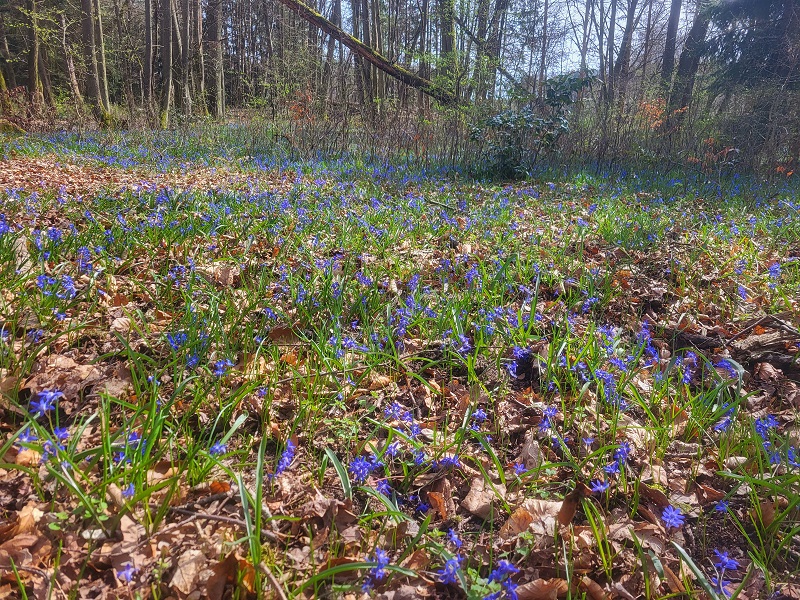
fot. Jakub Kazimir
Warto zwrócić uwagę na leśne geofity podczas leśnych wędrówek, zanim „zaginą” w późniejszej, bardziej bujnej roślinności. Wspomniana roślina jest gatunkiem charakterystycznym dla zbiorowiska roślinnych Querco-Fagetea czyli mezotroficznych i eutroficznych lasów liściastych zrzucających liście na zimę, rosnących na glebach mineralne o różnym stopniu wilgotności. Cebulica dwulistna kwitnie od marca do kwietnia. Jest samopylna lub zapylana przez owady. Ciekawostką jest tzw. myrmekochoria czyli roznoszenie nasion roślin przez mrówki, które gubiąc nasiona podczas transportu do mrowiska przyczyniają się do powiększania areału występowania danej rośliny. Obszar na którym występuje opisywana roślina to teren gdzie w okresie przed II wojną światową tętniło wiejskie życie, lecz osada nie dotrwała do czasów dzisiejszych. Należy również stwierdzić, że tak bujne kobierce występujące w roku bieżącym są efektem znikomej populacji dzika występującej na tym terenie, co stanowi skutek obecności ASF oraz redukcji populacji tego gatunku realizowanej przez myśliwych.


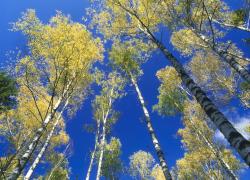 fot. Paweł Fabijański
fot. Paweł Fabijański
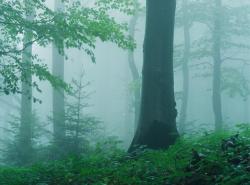 fot. Paweł Fabijański
fot. Paweł Fabijański
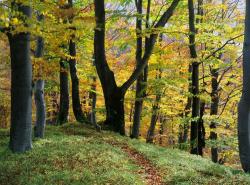 fot. Paweł Fabijański
fot. Paweł Fabijański

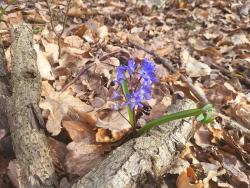 Cebulica dwulistna (fot. J.Karwański)
Cebulica dwulistna (fot. J.Karwański)
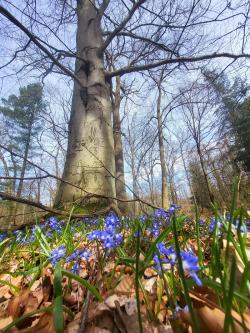 fot. Jakub Kazimir
fot. Jakub Kazimir
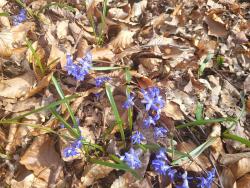 fot. J.Karwański
fot. J.Karwański



